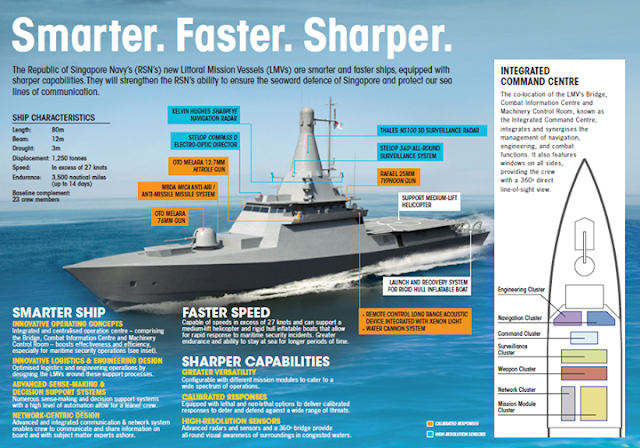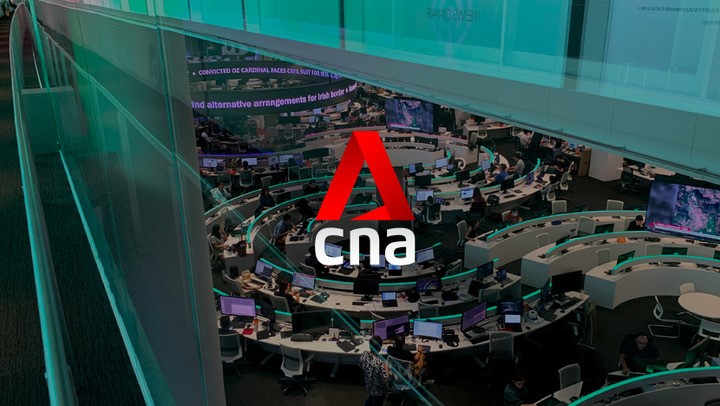Weeks before one of the U.S. Navy’s new
departed for Asia, tests had exposed its vulnerability to a potential enemy attack, according to the Pentagon’s testing office.
A “total ship survivability test” of the USS Fort Worth conducted off of Southern California in October “highlighted the existence of significant vulnerabilities” in the design of vessels built by Lockheed Martin Corp., according to Michael Gilmore, the Pentagon’s director of combat testing.
“Much of the ship’s mission capability was lost because of damage caused” by the simulated effects of a weapons attack and a hypothetical fire that followed, Gilmore said in an assessment for Congress obtained by Bloomberg News.
While the Fort Worth has never been in combat, it had an encounter with a Chinese ship in disputed waters of the South China Sea in May. Gilmore’s report, mandated by lawmakers, may add more congressional scrutiny of Navy budget requests for the Littoral Combat Ship, designed for missions in shallow coastal waters.
In 2014, then-Defense Secretary Chuck Hagel truncated the original program to 32 ships for an estimated $23 billion, citing “considerable reservations as to whether this is what our Navy will require over the next decades.” The Fort Worth is among the 32 initial ships, comprised of different versions built by Lockheed and Australia-based Austal Ltd.
After a Navy study, Hagel accepted a proposal to buy an additional 20 ships after 2019 with improved armor, sensors and weapons. However,
that the “minor modifications to the LCS will not yield a ship that is significantly more survivable.”
‘Validated’ Ability
Commander Thurraya Kent, a Navy spokeswoman, said in an e-mail that the test of the Fort Worth “validated the crew’s ability to perform as modeled” on computers, “which ultimately supports analysis that shows the ship meets its survivability requirements.”
With the Fort Worth now on a 16-month deployment to Asia that began in November, Gilmore’s report on its testing at sea, dated April 29, underscores the warship’s limitations.
The Littoral Combat Ship was conceived as tackling one task at a time, with modules that could be swapped out for different missions such as mine-clearing and anti-submarine or surface warfare.
A draft of a revised Navy concept of operations “indicates the Navy’s original vision of a nimble, mission-focused ship has been overcome by the realities of the multi-mission nature of naval warfare” in high-intensity conflicts, Gilmore wrote Defense Secretary Ashton Carter in a summary memo, also on April 29.
Computer Models
In at-sea testing, computer models and engineering assessments are used to predict damage to equipment and structures, the spread of a fire and flooding. The crew is then subjected to the effects of equipment shutdowns and battle damage.
Kent, the Navy spokeswoman, said the test on the Fort Worth “was a successful event that allowed the Navy to demonstrate that the inherent ship design features and applied LCS tactics, techniques and procedures provided the crew with the ability to contain damage, restore capability and care for personal casualties given the expected damage.”
Post-test analysis “identified potential system, equipment and procedural improvements which could further enhance ship and crew survivability,” she said.
But Gilmore’s unclassified summary said damage during the simulated October test “happened before the crew could respond and the ship does not have sufficient redundancy to recover the lost capability.”
“Some of the systems could be redesigned or reconfigured to make the ship less vulnerable” and faster to recover from damage “without requiring major structural modifications,” he wrote.
Off Philippines
This week the Fort Worth is taking part in a military exercise in the Philippines off the east coast of Palawan Island, near the South China Sea.
In the May incident, the vessel
a Chinese vessel near the disputed Spratly islands. The ships exchanged codes to help understand each other and talk via radio. It was the first time one of the Littoral Combat Ships operated in waters around the islands, which are claimed by countries including China, the Philippines, Vietnam and Malaysia.
Commander Rich Jarrett, the Fort Worth’s commanding officer, said in an interview Monday from the ship moored at Palawan that he’s also sailed on the first vessel of the class, the USS Freedom, since 2008. From that ship “to Fort Worth, we’ve made a number of substantial improvements,” he said. “A lot of improvements to the machinery system.”
The first ship “went from cocktail napkin to commissioned warship in five years, which is unbelievably fast in terms of producing a new machine of this complexity,” Jarrett said. “So there were a number of improvements that should have been made, just because it was built so fast,” he said.
“We are loving life on Fort Worth because it is just so much improved,” Jarrett said.










